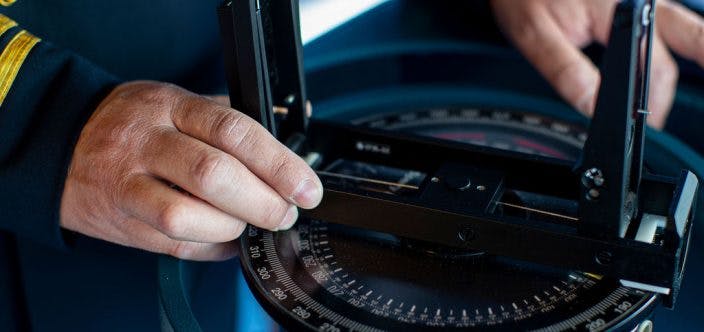Maintaining a safe watch: ECDIS best practices and effective Master’s Standing Orders

ECDIS and the user
The modern navigator relies heavily on ECDIS and therefore an in-depth familiarity and knowledge of the settings and information displayed is crucial. Although ECDIS has come a long way in terms of standardisation, emphasis on continual training needs to be maintained so that the functions available remain fresh in the navigator’s mind and can be used to their full potential. Continual training is also an important aspect of keeping up with ECDIS developments. The S-100 Universal Hydrographic Data Model is the framework for the next generation ENC and will provide navigators with much more information at their fingertips, such as detailed bathymetric data and surface currents; however, a tool is only as good as its user, and competence needs to evolve.
There have been numerous instances of groundings due to misunderstandings and mistakes relating to the input of the safety depth and safety contour. Setting the correct safety depth and safety contour is crucial, and must account for the vessel’s draught, the company’s required UKC, allowance for squat, the source accuracy data of the chart, and the height of tide.
A safe voyage begins with thorough voyage and passage planning and there needs to be a common understanding of the passage plan among the bridge team to ensure a shared mental picture and support situational awareness. Pre-departure and pre-arrival briefings that are visually aided via the ECDIS help to ensure this vital common understanding. ECDIS should also be incorporated in the change of watch procedure.
Some ECDIS best practice reminders:
- Ensure that you have set the correct safety contour and safety depth
- Set appropriate shallow and deep contour settings
- Check that the chart is up to date
- Ensure that you are using the correct chart scale
- Do not over-clutter the screen with unnecessary information
- Be aware of the accuracy of the chart that you are using (CATZOC Category)
- Use the watch vector/anti-grounding function
- Do not disable/silence/ignore alarms
- Maintain a proper look-out by all means necessary – this includes looking out of the window!
- Remain vigilant, complacency causes accidents.
Another tool available to the navigator which helps to detail best practices for safe watchkeeping is the Master’s Standing Orders (MSO). This document needs to be comprehensive but not overwhelming. Below we provide some brief guidance on what makes good Master’s Standing Orders.
Master’s Standing Orders: finding the balance between too much and too little information.
The Master’s Standing Orders should consider the nature of the vessel and her trade pattern, and what bridge team practices must be upheld in order to set the standard required from the watchkeepers. When writing his/her standing orders, the Master should reflect upon things that have caused concerns or difficulties in the past, and in contrast, also things that have been noted as beneficial to safe watchkeeping. These considerations should be integrated into the Master’s Standing Orders and communicated in clear terms. Deck Officers cannot be confident in following instructions that are not easily understandable.
To facilitate this clear understanding, readability must be good and the common pitfall of too much or too little information needs to be avoided. Our example accessed via the link below, can be used as a guide to help ensure that standing orders are comprehensive but not overwhelming: Master’s standing orders
Bridge and ECR posters
With the intention of providing as much guidance as possible to ensure safe watchkeeping, Alandia is pleased to release updated versions of the Bridge and ECR instruction posters which integrate essential maritime resource management:


